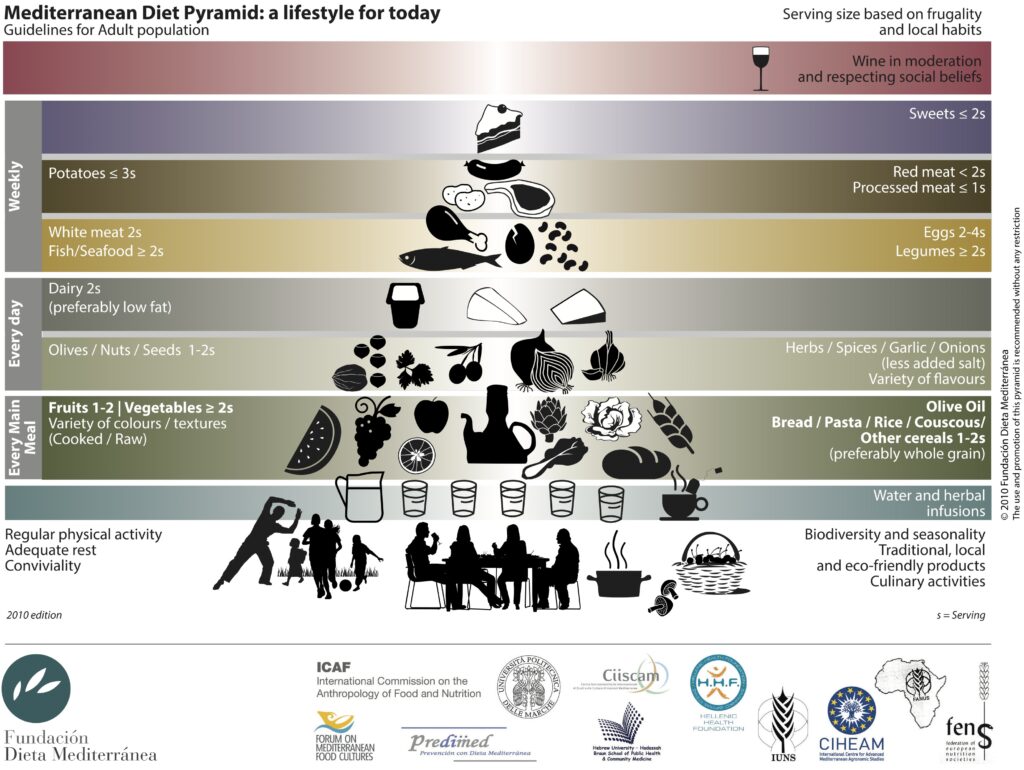
When embarking on a journey for weight loss and improved health, many individuals, much like clinical researcher Dr. Anna Patel, find themselves at a crossroads. Dr. Patel approached me for guidance, expressing a familiar challenge: “I’ve read all the studies, but can’t decide between keto, low-carb, or Mediterranean.” Her frustration is a common refrain in my practice, underscoring a vital truth – most diet failures don’t stem from a lack of effort, but from a mismatch between a dietary approach and an individual’s unique metabolic and lifestyle compatibility.
Navigating the vast landscape of nutritional advice can be daunting, with various eating plans promising transformative results. Two contenders that consistently stand out for their longevity and proven benefits are the Mediterranean Diet and the Ketogenic (Keto) Diet. While they appear fundamentally different on the surface, both have garnered significant attention for their impact on weight management and overall well-being. The critical question, however, remains: Which path offers the most effective and sustainable route for long-term weight loss and health without compromise?
This comprehensive analysis aims to synthesize valuable data from randomized controlled trials and real-world clinical observations. Our goal is to provide a clear, evidence-based answer to the pressing question of which dietary approach truly delivers optimal fat loss results while safeguarding and enhancing your health. We’ll break down each diet, exploring their core principles, practical applications, and the scientific outcomes you can expect, empowering you to make an informed decision for your body and your future.

1. **Understanding the Mediterranean Diet: Principles and Philosophy**The Mediterranean diet isn’t just another fad; it’s a healthy-eating plan deeply rooted in tradition and proven by modern science. More than a restrictive regimen, it’s considered a lifestyle, blending the foundational elements of healthy eating with the authentic flavors and culinary methods cherished by the people residing in the Mediterranean region. This approach emphasizes an abundant intake of plant-based foods, fresh ingredients, and a balanced perspective on meals.
Its acclaim as a heart-healthy eating plan began with observations from a pivotal study conducted in the 1960s. Researchers noted that cardiovascular disease was linked to fewer deaths in certain Mediterranean countries, such as Greece and Italy, compared to the U.S. and northern Europe. This compelling data sparked widespread interest, leading to further research into the dietary patterns of these populations and their remarkable longevity and low rates of chronic illness.
Today, the Mediterranean diet is not only recognized by American nutrition experts as one of the top healthy eating plans but is also endorsed by the World Health Organization as a healthy-eating pattern. Its global appeal extends beyond the Mediterranean basin, with many cultures, including Japan, exhibiting similar dietary patterns that share its core tenets. This widespread recognition underscores its versatility and adaptability as a sustainable, health-promoting lifestyle.
The enduring success of this diet, particularly for cardiovascular health, lies in consistent adherence. Research consistently suggests that for your heart to truly benefit and for you to experience its full range of protective effects, it’s essential to follow the Mediterranean diet over the long term. This isn’t a short-term fix but a lifelong commitment to nourishing your body with wholesome, traditional foods.
Read more about: Navigating the ‘Toxic’ Diet Fad: A Deep Dive into Gwyneth Paltrow’s Wellness Controversies and Expert Warnings

2. **Mediterranean Diet: The Foods You’ll Enjoy (and Those to Limit)**The foundation of the Mediterranean diet is built around an abundance of plant foods, making meals vibrant and nutrient-rich. This means your plates will be generously filled with vegetables, fruits, whole grains, beans, nuts, and seeds. Olive oil serves as the primary source of fat, and meals are frequently seasoned with a diverse array of herbs and spices, enhancing flavor without relying on excessive salt.
Key guidelines for following this diet are straightforward and practical. On a daily basis, you’ll prioritize eating vegetables, fruits, whole grains, and plant-based fats. Weekly, the focus shifts to incorporating fish, poultry, beans, legumes, and eggs. Dairy products, particularly options like low-fat cottage cheese and Greek yogurt, are enjoyed in moderate portions, while red meat and foods with added sugar are deliberately limited to occasional consumption.
Unsaturated fats are a significant strength of the Mediterranean diet, actively encouraged as a replacement for saturated and trans fats, which are known contributors to heart disease. Olive oil and nuts stand out as the main sources of fat, providing beneficial unsaturated fats that appear to lower levels of total cholesterol and “bad” LDL cholesterol. The Dietary Guidelines for Americans even affirm that replacing saturated fat with polyunsaturated fat actively lowers the risk of cardiovascular disease events and related deaths.
Fish also plays a crucial role in the Mediterranean eating pattern, with recommendations to consume it 2 to 3 times a week. Fatty fish like mackerel, herring, sardines, albacore tuna, salmon, and anchovies are particularly valued for their rich content of omega-3 fatty acids. These powerful unsaturated fats are known to reduce inflammation, lower blood fats called triglycerides, and may even decrease the risk of stroke and heart failure, making them essential components for heart health.
Beyond just food, the Mediterranean diet encourages a holistic approach to well-being. It promotes sharing meals with family and friends, fostering a sense of community and enjoyment around food. Regular exercise is also an integral part of this lifestyle, recognizing that physical activity complements healthy eating for optimal health outcomes. Wine, if consumed, is enjoyed in moderation with meals, typically red wine, though recent studies suggest caution regarding alcohol’s purported heart benefits.
3. **The Proven Health Benefits of the Mediterranean Lifestyle**The Mediterranean diet is a powerhouse when it comes to safeguarding your heart. It has been consistently linked with lower risk factors for heart disease, including significant reductions in high cholesterol and high blood pressure. By prioritizing unsaturated fats from sources like olive oil and nuts, and incorporating omega-3-rich fatty fish, this eating pattern actively supports cardiovascular health. These healthy fats are instrumental in lowering total and LDL (“bad”) cholesterol levels, replacing less healthy saturated and trans fats.
Beyond cholesterol management, the omega-3 fatty acids found abundantly in Mediterranean staples like salmon and sardines offer profound benefits. These unsaturated fats are known to diminish inflammation throughout the body, helping to reduce blood fats called triglycerides and positively influencing blood clotting. Collectively, these actions contribute to a lowered risk of serious cardiovascular events, including stroke and heart failure, making the Mediterranean diet a strategic choice for long-term heart protection.
For those seeking effective weight management, the Mediterranean diet stands out as one of the best diets available. Its emphasis on nutrient-dense, filling whole foods — such as fruits, vegetables, whole grains, and legumes — naturally limits the intake of high-calorie, low-nutrient processed items. This promotes a sustainable approach to reaching and maintaining a healthy weight. Its less restrictive nature also enhances long-term adherence, a critical factor for sustained weight loss results.
The benefits extend to a significantly reduced risk of developing a spectrum of chronic diseases. This diet has been associated with protection against cardiovascular disease, type 2 diabetes, kidney disease, lung disease, cancer, and neurodegenerative conditions like Alzheimer’s and Parkinson’s disease. A compelling JAMA study, which followed over 25,000 women for two decades, highlighted a clear reduction in the risk of diabetes and other chronic illnesses among participants following a Mediterranean eating pattern, underscoring its broad protective effects.
Read more about: The Celebrity Diet Trends Nutritionists Urgently Advise You to Avoid
4. **Deciphering the Ketogenic Diet: Core Mechanisms and Goals**The ketogenic diet, commonly known as keto, is a distinctive dietary approach characterized by its very low carbohydrate, high fat, and moderate protein macronutrient distribution. Originating in the early 20th century, it was initially developed and utilized as a therapeutic intervention for epilepsy, demonstrating remarkable success in managing seizures, particularly in children. Its efficacy in this specific medical context laid the groundwork for its broader exploration.
Over time, the keto diet’s unique metabolic effects caught the attention of researchers and health enthusiasts alike. While still a valuable treatment for epilepsy, it has gained widespread popularity for its other potential benefits, most notably its ability to facilitate significant weight loss. The diet operates on a precise macronutrient breakdown, typically consisting of 70-80% fat, 10-20% protein, and a strict 5-10% of calories from carbohydrates, often limited to 20-50 grams of net carbs per day.
The core mechanism behind the keto diet is the induction of a metabolic state known as ketosis. When carbohydrate intake is drastically reduced, the body, deprived of its primary fuel source (glucose), shifts its metabolic gears. It begins to break down stored fat into chemical compounds called ketone bodies. These ketone bodies then become the body’s primary source of energy. This process is precisely why the diet gets its name.
Reaching and maintaining ketosis requires strict adherence to the macronutrient ratios, particularly the very low carbohydrate limit, typically aiming for blood β-hydroxybutyrate levels of ≥0.5 mmol/L. This metabolic shift increases fat oxidation, meaning your body becomes highly efficient at burning fat for fuel. From a weight loss perspective, this often translates to superior initial weight reduction, primarily stemming from the depletion of glycogen stores, as evidenced by rapid weight loss observed in clinical case studies, such as an 8.2 kg loss in a three-month period for one patient profile.
5. **Keto Diet: Fueling Your Body (and What to Sideline)**To successfully achieve and maintain ketosis on the ketogenic diet, specific food choices are paramount. The diet encourages a high consumption of healthy fats and adequate protein. Staples include eggs, various fats and oils like olive oil, avocado oil, and coconut oil, along with an assortment of nuts and seeds such as peanuts, walnuts, pumpkin seeds, and chia seeds. Full-fat dairy products like butter, ghee, cream, and cheese also feature prominently.
Protein sources on a keto diet primarily consist of animal proteins. This includes beef, organ meats, fatty fish, and poultry, all chosen to contribute to the high-fat requirement while providing essential amino acids. When it comes to plant-based options, the focus is on low-carb fruits like lemons and avocados, and a wide array of above-ground, low-carb vegetables, including asparagus, tomatoes, celery, lettuce, and spinach.
Equally important as what to eat is what to rigorously avoid or limit. The ketogenic diet strictly prohibits or heavily restricts starchy vegetables such as potatoes, along with all grains and grain products like rice, bread, pasta, and quinoa. High-sugar fruits, including bananas, dates, mangoes, raisins, and pears, are off-limits due to their carbohydrate content, as are legumes like beans and lentils.
Beyond these specific food categories, ultra-processed foods, pastries, sweets (including hard candy and sugar-sweetened chocolate), and all sugar-sweetened and alcoholic beverages are to be sidestepped. The strict carbohydrate limit, often below 50 grams per day, means careful attention to all food labels. For context, even one cup of whole strawberries contains about 8.2 grams of carbohydrates, illustrating how quickly carb limits can be reached. For those who find giving up certain foods challenging, innovative solutions like Keto Bread, formulated with almond or coconut flour to maintain less than 2g net carbs per serving, can help mitigate cravings and support adherence.
6. **The Science-Backed Advantages of Going Keto**The ketogenic diet has firmly established itself as an effective method for promoting healthy weight loss. Research consistently demonstrates its ability to initiate significant fat loss, with studies showing it can promote weight loss while preserving muscle mass over the long term. Clinical observations reveal a superior initial loss compared to other diets, with data indicating an average of 1.2 kg per month of fat loss, which is notably higher than the 0.6 kg per month observed in Mediterranean diet followers in the short term. This rapid initial progress can be highly motivating for individuals seeking quick results.
Beyond its well-known weight loss benefits, the keto diet offers significant advantages in the management and prevention of various diet-related chronic diseases. It has shown particular efficacy in addressing conditions such as type 2 diabetes and heart disease. The metabolic shift into ketosis can lead to improvements in blood sugar regulation and lipid profiles, contributing to better overall cardiometabolic health. Furthermore, emerging research highlights its potential role in neurodegenerative diseases like Alzheimer’s disease and dementia, suggesting neuroprotective properties.
Perhaps the most historically recognized and scientifically robust benefit of the ketogenic diet is its therapeutic application in treating epilepsy. Since its inception, keto has been one of the most effective treatments for epilepsy, especially in children, where it can significantly reduce seizure frequency and severity when conventional medications are insufficient. This foundational use underscores its profound impact on neurological health and its capability to induce powerful physiological changes within the body.
The diet’s core mechanism of increasing fat oxidation means the body becomes highly efficient at burning fat for energy. This metabolic adaptation not only supports fat loss but also contributes to sustained energy levels for many adherents, once the initial adaptation phase is complete. This constant burning of fat for fuel is a key driver behind the diet’s various health advantages, from weight management to its therapeutic roles.
7. **Key Differentiator 1: Macro Tracking – Precision vs. Flexibility**One of the most fundamental distinctions between the ketogenic diet and the Mediterranean diet lies in their approach to macronutrient tracking. The keto diet, by its very nature, demands a high degree of precision when it comes to monitoring your intake of carbohydrates, proteins, and fats. To successfully induce and maintain the metabolic state of ketosis, it is absolutely essential to track these macronutrients closely, ensuring they fall within the strict ratios of 70-80% fat, 10-20% protein, and 5-10% carbohydrates. This meticulous attention to detail is crucial for maximizing your chances of achieving and staying in ketosis, which is the cornerstone of the diet’s efficacy.
Conversely, the Mediterranean diet takes a far more flexible and intuitive approach. It famously has no strict macronutrient restrictions and, consequently, does not require any macro tracking. Rather than focusing on precise grams or percentages of carbohydrates, proteins, and fats, the Mediterranean diet is primarily concerned with the overall quality and composition of the foods you include in your diet. Its emphasis is on whole, unprocessed foods like vegetables, fruits, whole grains, and healthy fats, without the need for meticulous numerical accounting.
This difference in methodology reflects distinct philosophies. The ketogenic diet prioritizes a specific metabolic state, making macro tracking a non-negotiable tool to manipulate body chemistry. Without diligently counting carbs, for instance, it would be very challenging to remain under the typical 20-50 gram daily limit necessary for ketosis. This level of precision can be empowering for some, providing clear guidelines and measurable progress.
In contrast, the Mediterranean diet encourages a broader, more holistic lifestyle shift that prioritizes food quality, diversity, and social eating patterns over quantitative tracking. Its flexibility makes it inherently more accessible and sustainable for a wider range of individuals, as it removes the mental burden and time commitment associated with daily macro calculations. This contrast is a critical factor for individuals weighing which diet aligns best with their personality, lifestyle, and willingness to engage in dietary monitoring.

8. **Key Differentiator 2: Carbohydrate Intake – Navigating Net Carbs vs. Wholesome Grains**After understanding the fundamental difference in macro tracking, the disparity in carbohydrate intake stands out as a crucial distinguishing factor between these two formidable diets. The ketogenic diet, by its very definition, mandates an extremely low carbohydrate consumption. Adherents typically limit their daily carb intake to no more than 50 grams, a strict threshold vital for the body to transition into and sustain ketosis. This stringent requirement means carefully scrutinizing food labels and being acutely aware of even small amounts of carbohydrates in everyday foods.
Consider this for perspective: a single cup of whole strawberries, a seemingly healthy choice, contains approximately 8.2 grams of carbohydrates. This illustrates just how quickly one can reach the daily carb limit on a keto diet, underscoring the necessity for disciplined food selection and portion control. The goal here isn’t just to reduce carbs, but to almost eliminate them as a primary energy source, compelling the body to switch to fat metabolism.
In stark contrast, the Mediterranean diet embraces carbohydrates, actively encouraging their consumption, provided they are high-quality, unrefined sources. Your plate on a Mediterranean diet will be generously filled with whole grains like brown rice, quinoa, and whole-grain bread, along with an abundance of fruits and legumes such as beans and peas. This approach celebrates the nutritional richness and fiber content these foods provide, rather than restricting them.
Crucially, while the Mediterranean diet champions carbohydrate-rich whole foods, it aligns with keto in discouraging the regular consumption of refined carbohydrates and added sugars. This shared philosophy underscores a broader health principle: the *quality* of your carbohydrates matters immensely, regardless of whether you’re aiming for ketosis or a balanced, plant-centric eating pattern. It’s about smart carb choices, not just carb avoidance.
9. **Key Differentiator 3: Food Sources – Plant Power vs. Animal Focus**The fundamental philosophy regarding primary food sources marks another significant divergence between these two popular diets. The Mediterranean diet is unequivocally plant-based, building its entire framework around the bounty of the earth. Meals are centered on a vibrant array of vegetables, fruits, whole grains, legumes, nuts, seeds, and the ubiquitous, heart-healthy olive oil, all seasoned generously with herbs and spices.
Animal products are included, but in moderation, and with a clear preference. Seafood, especially fatty fish rich in omega-3s, is recommended at least twice a week and serves as the primary non-vegetarian protein source. Poultry and eggs are also enjoyed in moderate amounts, while red meat is deliberately limited to occasional consumption, typically no more than two servings per week. This emphasis reflects a holistic approach to nutrition where plant diversity takes precedence.
Conversely, the ketogenic diet, particularly in its practical application, leans heavily towards animal proteins and animal-derived fats. While it includes low-carb plant foods like avocados, nuts, seeds, and above-ground vegetables such as asparagus and spinach, the high-fat requirement naturally steers consumption towards sources like beef, organ meats, fatty fish, and poultry. Full-fat dairy products like butter, ghee, cream, and cheese also feature prominently.
This is largely due to the macronutrient demands of ketosis. Very few plant foods contain substantial amounts of fat compared to their carbohydrate or protein content, making animal products a more straightforward way to achieve the 70-80% fat target. For instance, while avocados are fantastic, they don’t quite measure up to the fat density of, say, pork or certain cheeses when aiming for such high fat percentages, influencing the dietary composition significantly.

10. **Key Differentiator 4: Fat Types – The Unsaturated Edge vs. Embrace All Quality Fats**While both diets champion “healthy fats,” their specific emphasis on fat *types* reveals a nuanced yet critical distinction. The Mediterranean diet strongly advocates for unsaturated fats as its cornerstone. Olive oil, a monounsaturated powerhouse, is the undisputed star, complemented by other rich sources like nuts, seeds, and fatty fish, all known for their beneficial unsaturated fatty acid profiles. This dietary pattern actively promotes replacing saturated and trans fats with these heart-healthy options.
The rationale here is deeply rooted in cardiovascular health. Research consistently shows that replacing saturated fat with polyunsaturated fat actively lowers the risk of cardiovascular disease events and related mortality. The omega-3 fatty acids from fish, for instance, are celebrated for their ability to reduce inflammation, lower triglycerides, and positively impact blood clotting, further solidifying the Mediterranean diet’s heart-protective reputation. It’s a precise focus on fats that actively *improve* lipid profiles.
The ketogenic diet, on the other hand, embraces a high intake of *all* high-quality fats, including saturated fats, as long as they contribute to the overarching macronutrient goal of 70-80% fat intake. This means that while healthy unsaturated sources like olive oil, avocado oil, nuts, and seeds are encouraged, so too are saturated fat-rich foods like beef, whole dairy products, butter, ghee, cream, and cheese. The primary objective is achieving ketosis, and fat is the fuel.
It’s less about avoiding saturated fat and more about ensuring a high overall fat intake to drive the body into a fat-burning state. The quality of these fats remains paramount, favoring whole, unprocessed sources over hydrogenated oils or trans fats. This broad acceptance of fat types, driven by the metabolic aim of ketosis, sets it apart from the Mediterranean diet’s more specific focus on unsaturated fat dominance.
11. **Key Differentiator 5: Suitability and Health Risks – Broad Appeal vs. Targeted Application**When considering who might benefit most from each diet, their inherent flexibility and potential health risks present a clear demarcation. The Mediterranean diet, due to its less restrictive nature and emphasis on whole, unprocessed foods, is widely regarded as one of the safest and most universally beneficial eating plans. It’s suitable for a broad spectrum of individuals, including children, the elderly, and even those managing various diet-related diseases. Its balanced approach minimizes the risk of nutrient deficiencies and adverse side effects, making it a sustainable choice for most.
Its endorsement by major health organizations, including American nutrition experts and the World Health Organization, highlights its broad applicability and low risk profile. The diet’s flexibility allows for individual preferences and cultural adaptations, making it easier to integrate into diverse lifestyles for the long term. This inclusivity is a cornerstone of its appeal, fostering healthy habits without imposing rigid limitations that could lead to non-adherence.
The ketogenic diet, however, is a far more restrictive and metabolically demanding approach, making it unsuitable for everyone without careful consideration and supervision. Its strict macronutrient ratios, particularly the very low carbohydrate intake, can pose challenges and potential risks for certain populations. For instance, pregnant women, breastfeeding women, and individuals with eating disorders are strongly advised to only follow a ketogenic diet under the strict guidance of a qualified medical doctor.
Furthermore, the metabolic shift into ketosis can initially present side effects such as the “keto flu” (fatigue, headache, irritability). While many experience significant benefits, the diet’s intensity means it requires a higher degree of commitment and monitoring. This targeted application, often for specific therapeutic purposes like epilepsy or rapid weight loss, contrasts sharply with the Mediterranean diet’s broader, more gentle, and inclusive health promotion.

12. **Unveiling Commonalities: Unexpected Bridges Between Keto and Mediterranean**Despite their significant differences, it’s fascinating to discover the underlying principles that both the ketogenic and Mediterranean diets share, forming unexpected bridges in their pursuit of better health. Both dietary approaches, for instance, endorse a liberal consumption of *high-quality* fats. While the types and ratios may differ, both recommend nutritious fat-containing foods such as olive oil, avocados, nuts, and seeds. This shared emphasis on moving away from low-fat dogma towards beneficial fats is a powerful commonality.
Moreover, both diets are lauded for their profound health benefits, particularly in managing and preventing diet-related chronic conditions. Whether it’s improving cardiovascular health, regulating blood sugar for type 2 diabetes, or even exploring neurodegenerative disease prevention, both eating patterns have demonstrated significant efficacy in these areas. The scientific literature supports their roles in fostering long-term well-being, showcasing their impact far beyond mere weight reduction.
On the subject of weight loss, both the Mediterranean and keto diets have proven to be effective methods. By encouraging the consumption of nutrient-dense, whole foods and discouraging unhealthy, processed alternatives, both approaches facilitate healthy, sustainable weight loss for overweight individuals. Research has consistently shown that adherence to either diet can lead to positive outcomes in weight management, albeit through different mechanisms and often at different paces.
A less obvious but equally important similarity lies in their inherent flexibility. While keto might seem rigid due to macro tracking, both diets allow for personalization. A lactose-intolerant individual can adapt a dairy-free keto plan, just as a pescatarian can thrive on a meat-free Mediterranean diet. This adaptability ensures that individual needs and preferences can be accommodated, increasing the likelihood of long-term adherence and success.
Finally, there’s a considerable overlap in the recommended food groups and what they explicitly *avoid*. Both diets champion seafood, eggs, nuts, and seeds. Crucially, both strongly advocate for minimal or no consumption of ultra-processed foods, refined sugars, and unhealthy additives. They converge on the principle that whole, unprocessed foods are superior, and that conscious, informed food choices are paramount for health, regardless of the specific macro breakdown.
13. **Your Top Questions Answered: Navigating the Diet Landscape**It’s natural to have lingering questions when comparing two such influential dietary powerhouses. One of the most frequently asked queries is: “Can you get into ketosis on a traditional Mediterranean Diet?” The straightforward answer is no. Ketosis is a metabolic state induced by severely restricting carbohydrate intake, typically below 50 grams per day, forcing the body to burn fat for fuel. The Mediterranean diet, with its flexible macronutrient distribution averaging around 50% carbohydrates from wholesome sources like whole grains and fruits, fundamentally prevents the body from entering a deep state of ketosis.
However, the idea of combining the two has sparked interest, leading to the concept of a “keto Mediterranean diet.” This modified approach aims to leverage the healthy fat focus of the Mediterranean diet while maintaining ketogenic carb levels. To achieve this, traditional Mediterranean staples like whole grains, many fruits, and legumes, which are rich in carbohydrates, would need to be eliminated. It’s an adaptation that deviates significantly from the true Mediterranean eating pattern.
Another common question is: “Is the Mediterranean diet considered low-carb?” Again, the answer is no. While it emphasizes healthy, complex carbohydrates, its inclusion of generous amounts of whole grains (like bread and pasta), a wide variety of fruits (such as apples and bananas), and legumes (like beans and peas) means its overall carbohydrate content is far too high to be classified as low-carb. It champions nutrient-dense carbs, distinguishing itself from diets that severely restrict them.
Finally, the million-dollar question: “Which diet is better for weight loss: keto or Mediterranean diet?” The truth is, the “best” diet is highly individual. While the keto diet often leads to faster initial weight loss due to rapid glycogen depletion and increased fat oxidation, studies suggest that the Mediterranean diet, being less restrictive and more flexible, tends to yield more sustainable and long-term results. Clinical evidence even points to keto’s initial weight loss often being regained by 18 months, whereas the Mediterranean diet shows sustained loss. Ultimately, the most effective diet is the one you can consistently adhere to over time, integrating it seamlessly into your lifestyle.

14. **The Personalized Path: Crafting Your Long-Term Weight Loss Strategy**After a thorough exploration of both the Mediterranean and Ketogenic diets, it becomes clear that there isn’t a single, universally “superior” answer for long-term weight loss. Instead, the most effective strategy lies in personalizing your approach. Consider your individual goals: if rapid initial weight loss and precise metabolic control are your priority, particularly under medical supervision, then initiating with a ketogenic or low-carb diet might be appealing. However, be mindful of potential side effects like mental fog or constipation, and monitor electrolytes closely.
For individuals seeking a more sustainable, holistic, and less restrictive path, especially for cardiovascular health and overall longevity, the Mediterranean diet stands out as an excellent choice. Its emphasis on anti-inflammatory effects through polyphenols and omega-3s, coupled with its focus on gut diversity, correlates strongly with long-term weight maintenance and reduced chronic disease risk. Structured plans, like the Mediterranean Plan meal templates mentioned in our clinical insights, can provide a valuable roadmap for implementation.
Emerging research even suggests a powerful transitional strategy: beginning with a keto or low-carb approach for its rapid initial results, then gradually transitioning to a Mediterranean eating pattern for sustained maintenance. This “biphasic” approach, as some studies call it, allows you to leverage the quick wins of keto while adopting the long-term, health-promoting habits of the Mediterranean diet. It’s about adapting your dietary strategy as your body and goals evolve.
Ultimately, the decision algorithm for your dietary journey should factor in your activity level, age, current health status, genetic predispositions, and lifestyle compatibility. Remember the clinical insight that the initial greater weight loss with keto often diminishes by month 10 due to declining adherence. This highlights the paramount importance of choosing a plan that feels manageable and enjoyable for *you*, not just one that promises quick fixes. Always consult your doctor or a qualified dietitian before making significant dietary changes, ensuring your chosen path supports your unique health profile and long-term well-being.
As we conclude this in-depth comparison, it’s evident that both the Mediterranean and Ketogenic diets offer distinct advantages for health and weight management. Your journey toward optimal health isn’t about rigid adherence to one extreme, but rather about informed choices and intelligent adaptation. Embrace the evidence, listen to your body, and build a sustainable eating pattern that truly nourishes your future.











